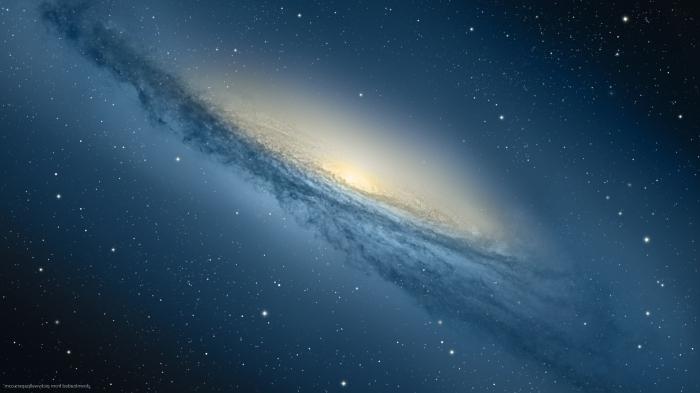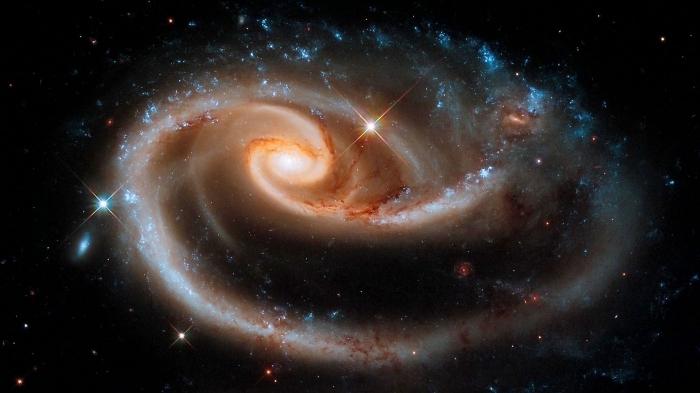Galaxy The Andromeda Nebula is one of the largest clusters of stars closest to our native galaxy. It is part of the so-called local group of galaxies, whose members, in addition to it, are our Milky Way with satellite galaxies and the Triangle galaxy (which can also have satellites that are still undetected). In fact, the closest to the Milky Way are small clusters - the Big and Small Magellanic clouds. The galaxy itself combines about a trillion stars (and this is five times more than in our own), and the radius of its circumference is more than 110 thousand light years. The Andromeda nebula is two and a half million light-years away from us, and it would take 46 billion years to get there, the most advanced spacecraft to date. This is at least six times more than the Earth exists. Such numbers are even hard to imagine!
Nearby Galaxy Observing History
A dense cluster of stars in the sky was noticed as far back as the Middle Ages. In particular, in one of the Arabic chronicles, the Andromeda Nebula is referred to as a small cloud. This cluster of stars located in the constellation Andromeda (for which, in fact, the nebula got its name) was observed by astronomers for centuries. However, without significant advances in its description. However, technological capabilities have allowed humanity to take a step forward in this regard. In 1885, an interesting event took place - a supernova broke out in the Andromeda Nebula galaxy , and the attention of astronomers around the world turned to this cluster.

True, according to one version, it exploded a long time ago, several million years ago, and what scientists took for the birth of a new star is just the light from the explosion, which only now (or rather, in 1885) has reached the Earth. The Andromeda nebula, the photo of which was first obtained in 1887, appears before astronomers in the form of a huge spiral cluster of bodies. A stunning discovery was made in 1921 by the American Westo Slifer. Having calculated the trajectory of the galaxy, he found out that the Andromeda Nebula with monstrous speed rushes right in the direction of the Milky Way. According to modern astronomers, in 4 billion years, the merger of two galaxies will occur. This will not look like a collision at all, however, the stars of the two clusters are likely to undergo a significant rearrangement and a change in their own orbits. Surely many bodies will even be squeezed out of the boundaries of the newly formed galaxy into interstellar space. Interestingly, in 1993, another cluster of stars was discovered in the center of the Andromeda Nebula. Perhaps it is the result of another galaxy absorbed by the Nebula millions of years ago.

Nebula Features
According to the ideas of modern astrophysicists, supermassive black holes are located in the centers of most spiral galaxies. They are difficult to consider due to the large piling up of celestial bodies at the centers of the spirals, as well as due to the absence of radiation or reflection of light. However, black holes can be detected by observing how they affect other objects. It is curious that in the core of the Andromeda Nebula there are simultaneously two such candidates for supermassive black holes.